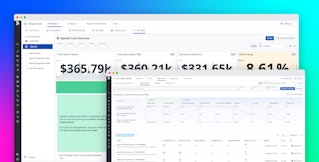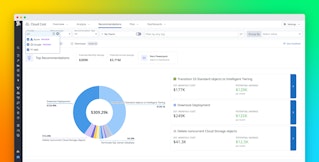
Aaron Kaplan

Natasha Goel

Kayla Taylor
Understanding costs is an essential part of service ownership. But in cloud-based applications, the cost of any given service often comes down to a wide range of dynamic factors. Individual services can incur fees from numerous dependencies, from data stores to observability solutions, and keeping track of these expenses can mean reckoning with the intricacies of many different billing models. Meanwhile, in container environments, resource sharing is the norm, which can make it difficult to attribute costs to specific services in the first place. As a result, as applications evolve and teams scale and optimize their services, costs can be affected in unpredictable ways.
In this post, we’ll explore how Datadog Cloud Cost Management can help you quickly grasp and flexibly analyze the total cost of each of your services. By breaking down all of the costs associated with these services in clear-cut, FOCUS-defined terms, Cloud Cost Management can ultimately help you take greater accountability and more proactive control as a service owner.
We’ll cover using Cloud Cost Management to understand your service costs holistically, quickly and flexibly query those costs, and harness fine-tuned cost data alongside your other service KPIs.
Understand your service costs holistically
Datadog calculates the total cost of each of your services based on data from the cloud, SaaS, and observability providers you use with that service—from AWS, Google Cloud, and Azure, to Snowflake, MongoDB, and Databricks, to Datadog itself (a capability now in Preview). With Cloud Cost Management, you can also simplify cost analysis for containerized services that share resources by deriving the precise costs of each of your containerized workloads.
Service owners can quickly determine the total cost of each of their services by navigating to the Costs tab of the Datadog Service Catalog, which supports end-to-end service ownership by offering a wide range of resources for each of your services—such as information on dependencies and ownership, documentation, and links to associated Slack channels—in a shared, central UI.
Under the Costs tab, the total cost of each of your services is broken down by provider alongside cost-saving recommendations and information on cost changes.

You can use the My Teams filter to narrow this view down to services owned by specific teams, helping you quickly focus on the services you manage.
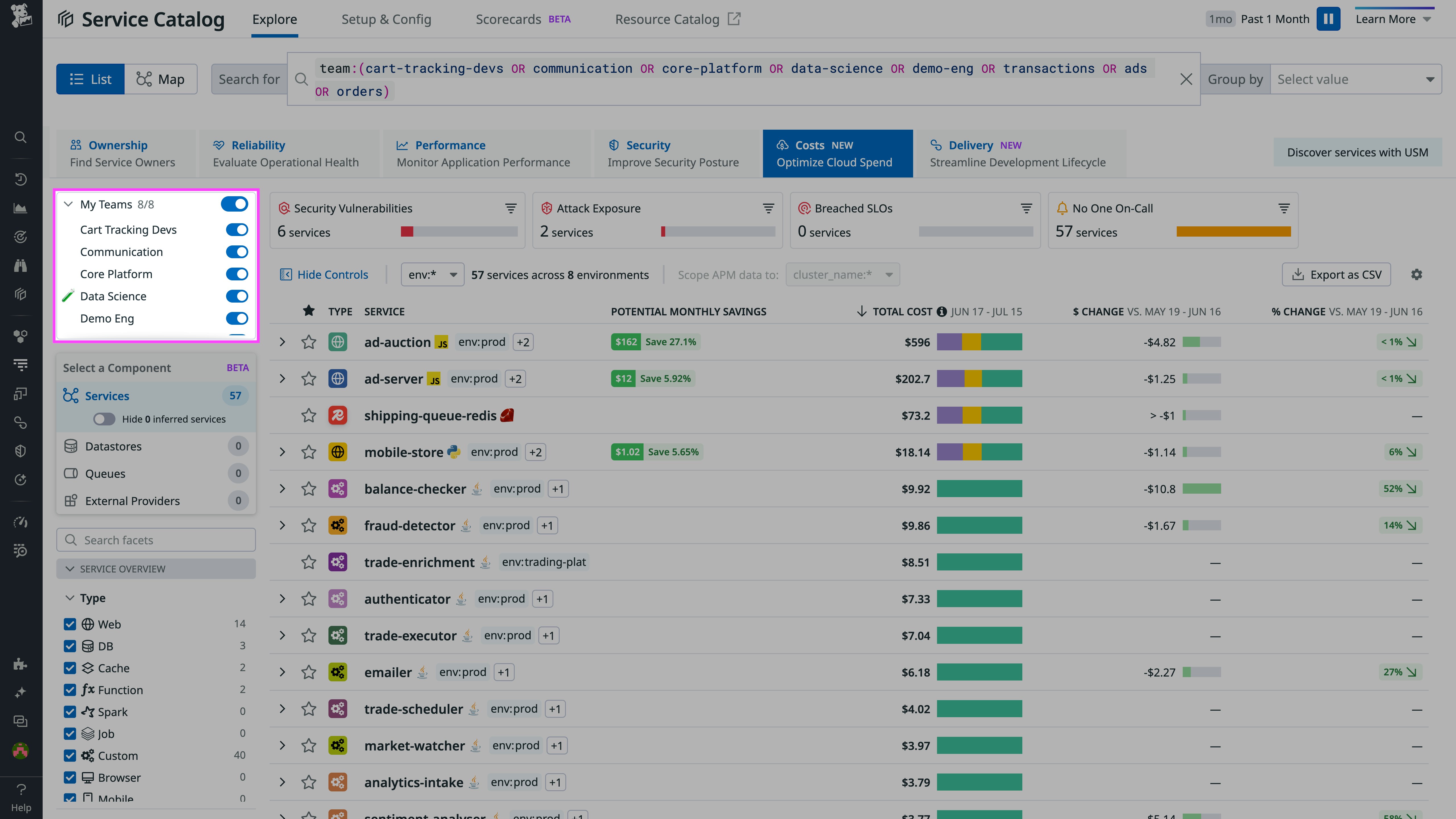
You can select any service from this list to access its Cost Summary in a side panel. The Total Cost breakdown in the top left of the summary lets you gauge the cost of your service at a glance, showing the overall monthly cost and summarizing the top contributors to this cost.

You can use the dropdown directly beneath the Total Cost summary to access a breakdown of costs for each provider. The screenshot below, for example, shows the Cloud Cost Management breakdown of the monthly Datadog costs for the logs-event-store-reader service.
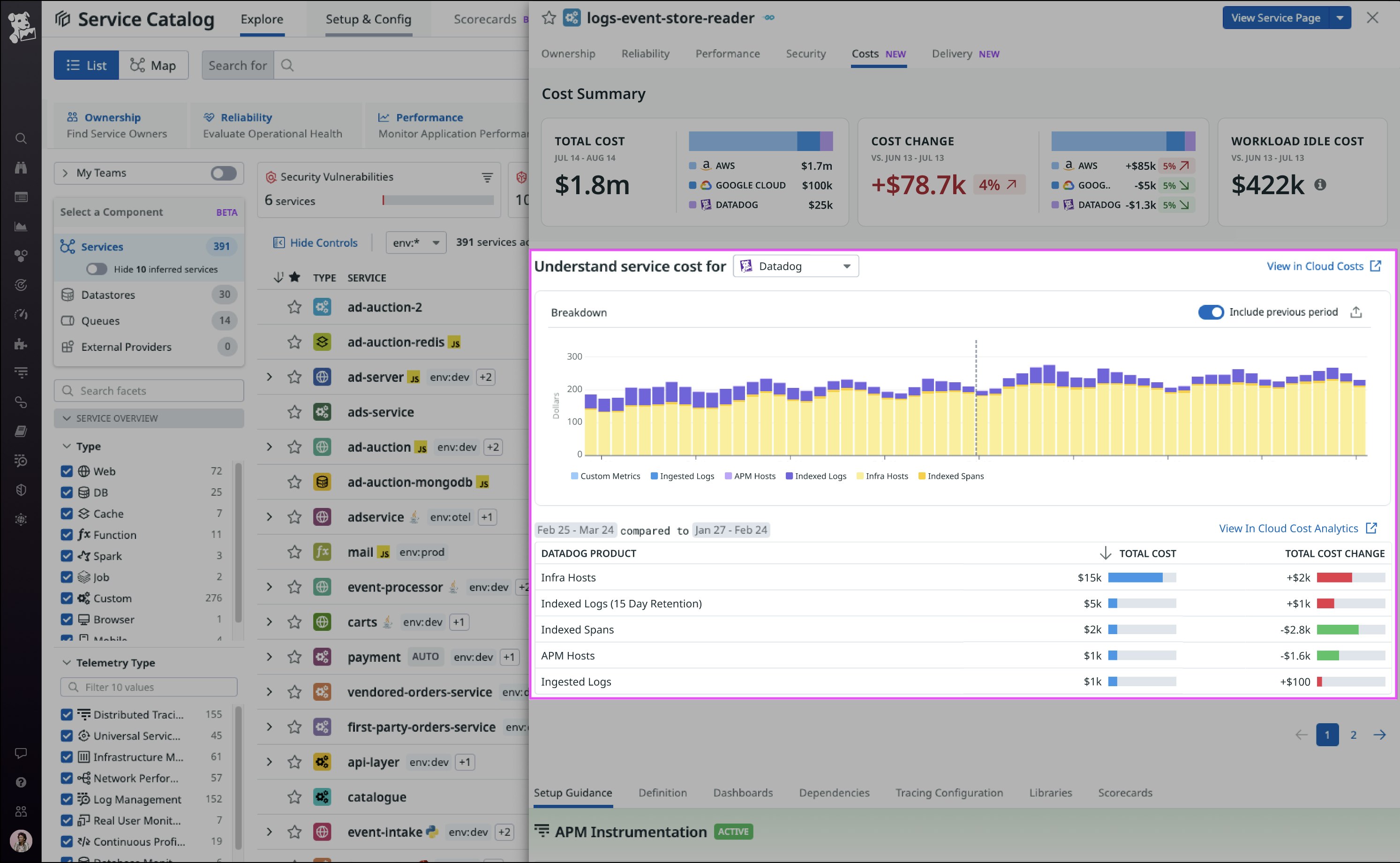
Cloud Cost Management allows you to track your Datadog costs with precision by breaking down the costs incurred by your service with each of the individual Datadog products you use on a daily basis. With this level of granular visibility, you can monitor day-to-day cost changes and understand precisely what’s driving them.
Next, we’ll take a look at how you can use Cloud Cost Management for even more in-depth, flexible analysis of your service costs.
Quickly and flexibly query all of the costs associated with your services
With Cloud Cost Management analytics, you can quickly and flexibly query all of the costs associated with your services for granular analysis, helping you understand costs across providers and eliminate any uncertainty around cost changes.
Querying data from many different providers can be tricky, since each provider typically uses distinct naming conventions for tagging data. For example, let’s say you want to break down the costs associated with each of your cloud provider accounts. If you use multiple providers, you’ll need to know (or find) the distinct tag each one uses for your account ID: usageAccountID for AWS, subscriptionid for Azure, and project_id for Google Cloud. With more complex queries, and for those frequently querying data from many different providers, this can quickly lead to headaches.
Cloud Cost Management simplifies the querying of your cost data by consolidating related tags from different providers into groups based on the FOCUS standard. Datadog also provides tag pipelines to help you standardize your tagging using your own custom tag rules. These features make it easy to quickly home in on the data you need from any number of providers.
Let’s say you manage the web-store service and you want to take a closer look at every piece of its total cost. To do so, you navigate to the Cloud Cost Management Analytics page, search using the service tag, and group the results by providername, servicename, and regionname. In doing so, you’re able to see the costs your service is incurring in each of your environments from each of the products you’re using from each of your providers. Perhaps you’re specifically interested in determining the costs this service is incurring from your cloud providers. As shown below, you can filter your results using the Provider dropdown below the search bar. You can also filter results by cost type, service, and team.
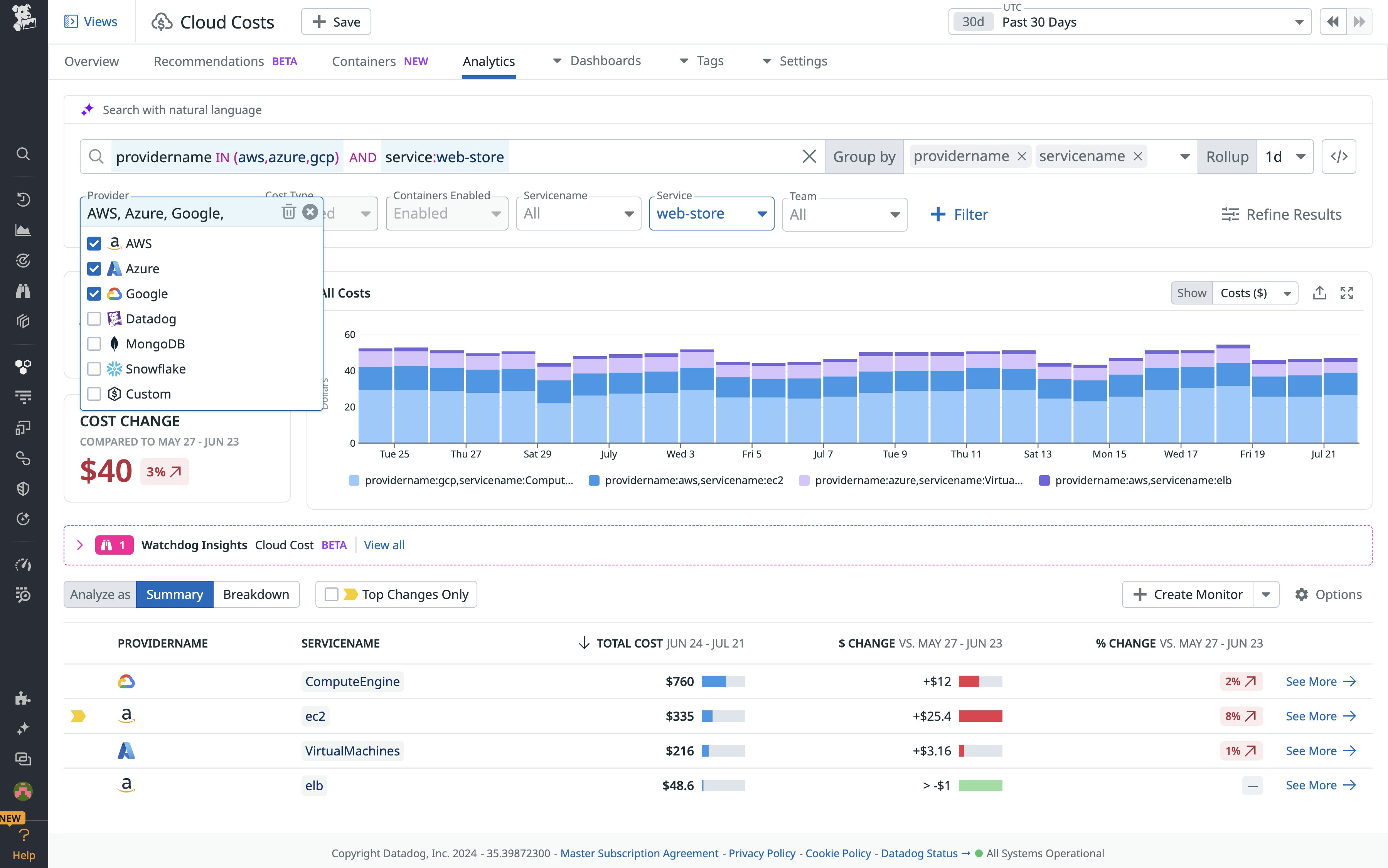
From here, you can click on any result for a detailed view of the provider costs over time.
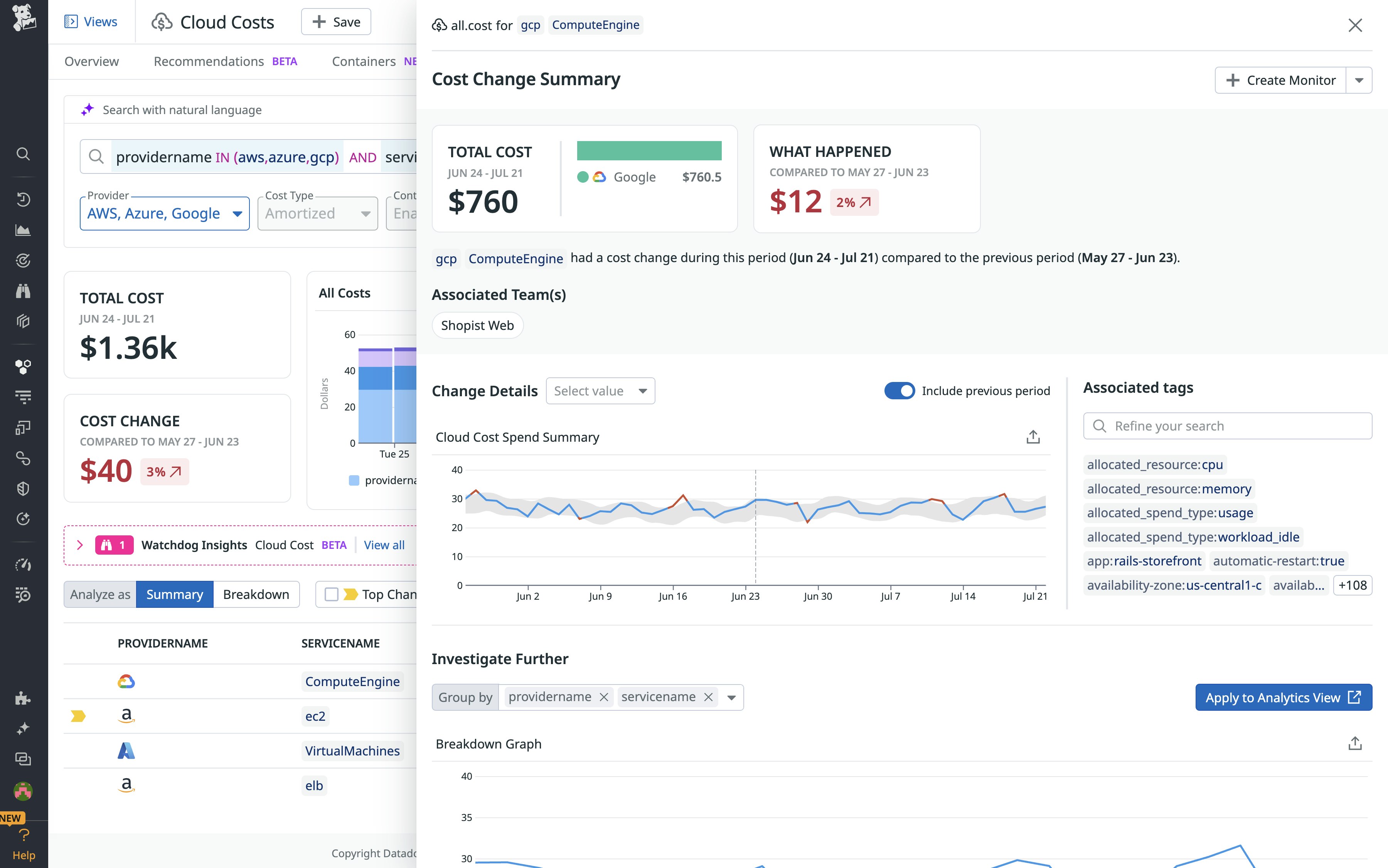
This type of flexible querying can provide indispensable granular visibility into the full range of dynamic costs behind each of your services. And to stay ahead of unexpected cost changes, you can create Cloud Cost Monitors based on your queries.
Next, we’ll look at how you can incorporate these insights into your routine monitoring of your services for more holistic oversight as a service owner.
Use fine-tuned cost data alongside your other service KPIs
With flexible querying of costs from multiple sources, service owners can easily track their costs alongside other KPIs. For example, let’s say you use a custom dashboard to track the overall health and performance of one of your services—we’ll continue with the example of the web-store service from above. You can track and analyze the total cost of this service over time by graphing data from Cloud Cost Management and incorporating it in your dashboard.
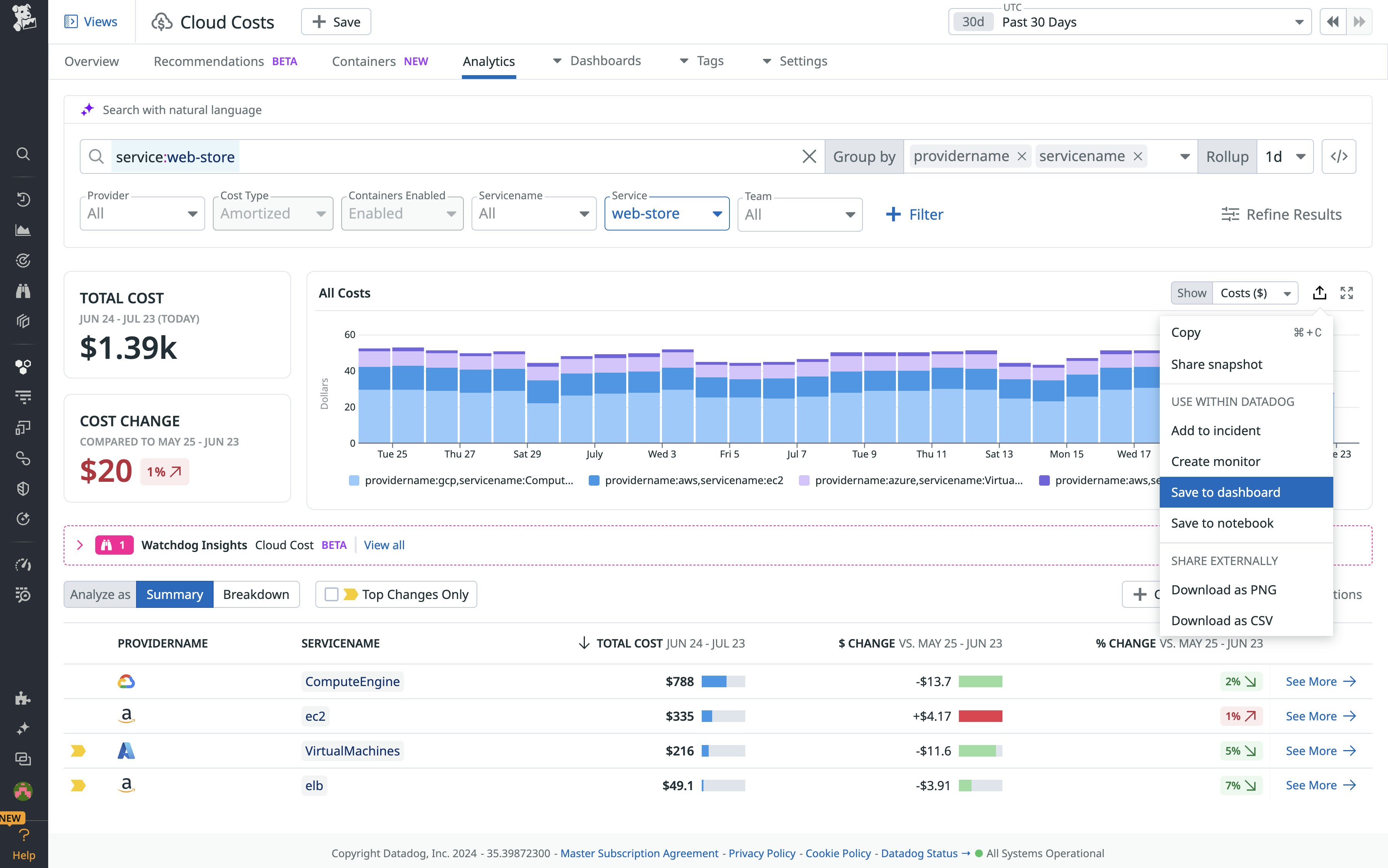
This can help you draw important correlations and guide tradeoffs between cost and performance as you work to optimize your service. You can also use Change Overlays to pinpoint and analyze the effects of specific deployments on your costs. Let’s say you’re deploying a series of changes to your service to improve its stability and scale it up to accommodate increased demand. You can toggle on Change Overlays in order to track whether any of these changes affect any of the costs behind this service. This type of visibility can help you understand precisely what’s driving the overall costs of the services you own and take action quickly if any of these costs get out of hand.
As a service owner, correlating cost data with your other observability data is crucial for helping you understand cost changes. As you’re tracking your service costs, it’s important to remember that increased costs can be a good sign (and decreased costs a bad one). A change in cost may correspond with a change in customer activity, for example.
Cloud Cost Management helps you understand changes in your service costs by letting you analyze the unit costs that ultimately matter to your business. For example, let’s say you manage a shopping cart service for an ecommerce application. By correlating the cost data for your service with events data, you’re able to zero in on the average cost of every customer checkout. This type of granular visibility can yield important KPIs.
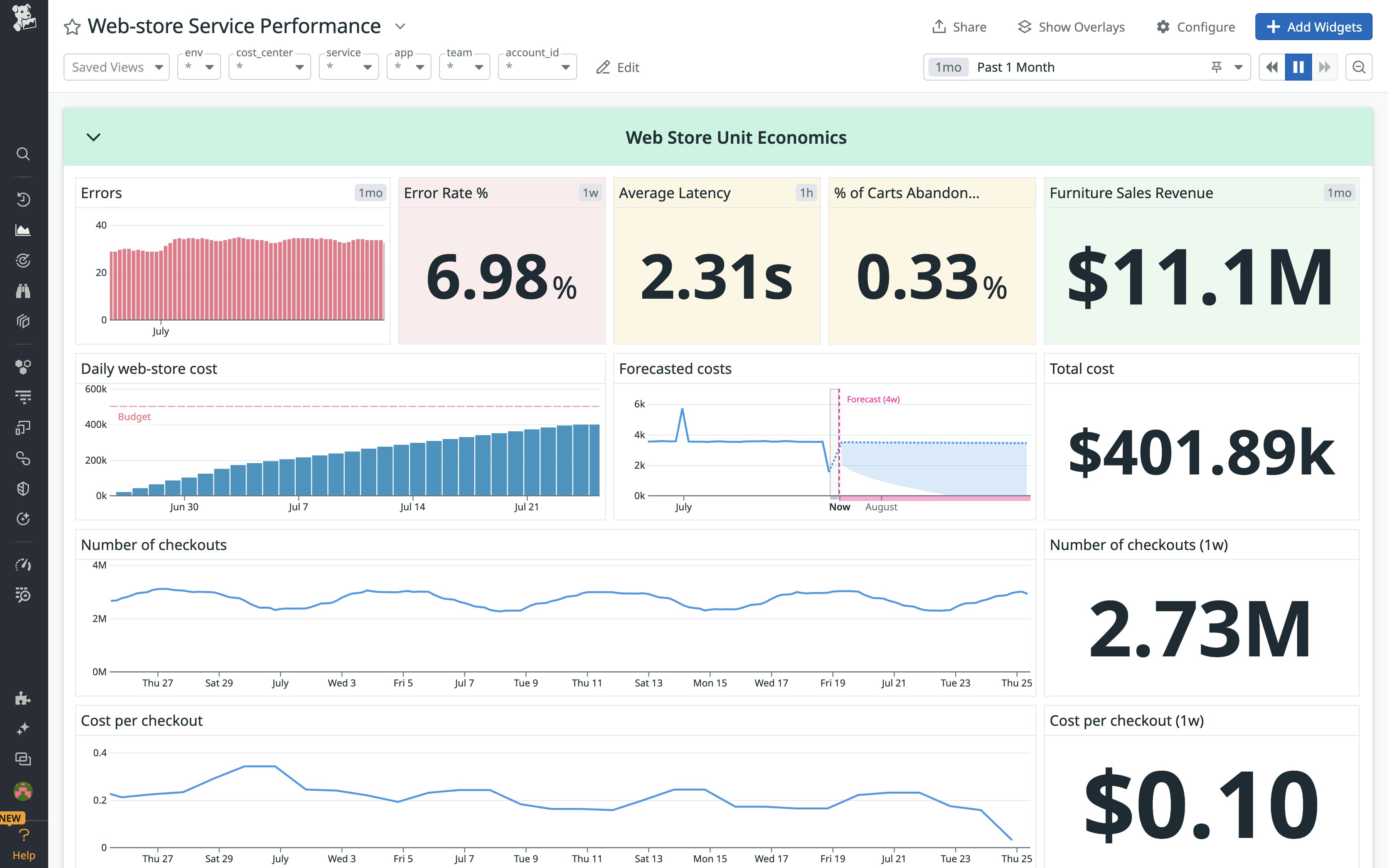
Take total ownership of your services
Datadog Cloud Cost Management provides a clear, comprehensive picture of all of the costs that go into each of your services. Correlating this information with your other observability data can help you more effectively optimize and ultimately take greater ownership of your services.
To get started with Cloud Cost Management, you can check out our documentation. You can also learn more elsewhere on our blog. And if you’re new to Datadog, you can sign up for a 14-day free trial.


